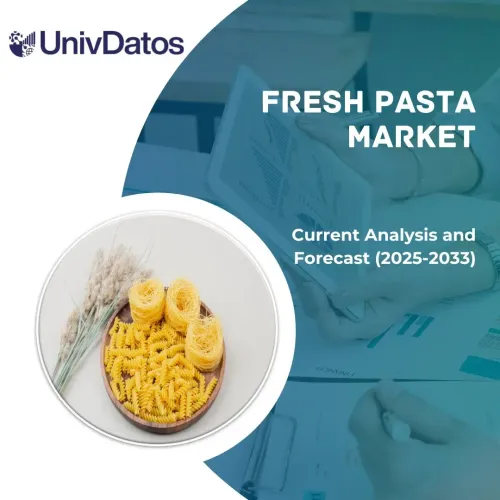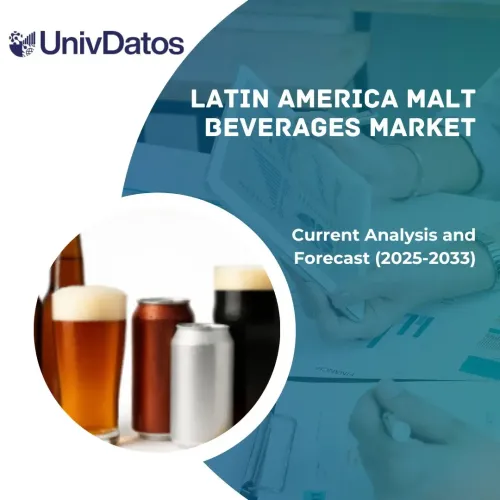- Home
- About Us
- Industry
- Services
- Reading
- Contact Us
Stevia Market: Current Analysis and Forecast (2021-2027)
Emphasis on Filtration Type (Whole Leaf, Powder, Liquid, Others); Application (Food, Beverage, Dairy & Frozen Desserts, Bakery & Confectionery, And Tabletop Sweeteners); and Region/Country
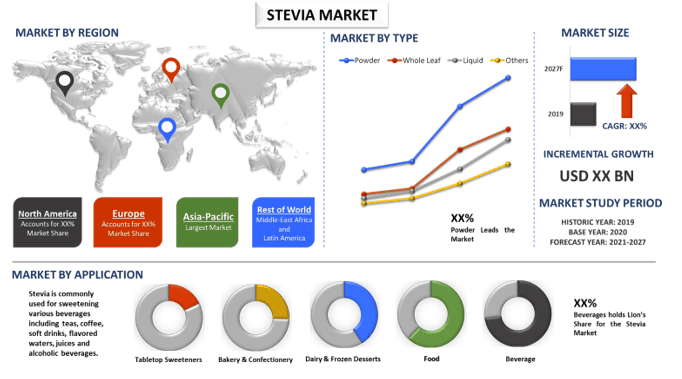 Global Stevia Market was around US$ 490 million in 2020 and is anticipated to reach above US$ 800 million by 2027 displaying an elevated CAGR of ~8% over the forecast period (2021-2027). Stevia is a naturally sweet-tasting plant native to Paraguay and Brazil but is also grown in Japan and China. This plant is used as a non-nutritive sweetener and herbal supplement which contains little or no calories. It is a healthful alternative to added sugar in many meals and beverages.
Global Stevia Market was around US$ 490 million in 2020 and is anticipated to reach above US$ 800 million by 2027 displaying an elevated CAGR of ~8% over the forecast period (2021-2027). Stevia is a naturally sweet-tasting plant native to Paraguay and Brazil but is also grown in Japan and China. This plant is used as a non-nutritive sweetener and herbal supplement which contains little or no calories. It is a healthful alternative to added sugar in many meals and beverages.
The prevalence of obesity and overweight is rising dramatically across the globe and has nearly tripled since 1975. Obesity is among one of the leading causes of death worldwide as obese people are prone to many serious health conditions and illnesses. For instance, as per CDC, more than 900,000 adult COVID-19 hospitalizations occurred in the United States between the beginning of the pandemic and November 18, 2020. Models estimate that 271,800 (30.2%) of these hospitalizations were attributed to obesity. Also, the number of people overweight or obese has reached epidemic proportions fueling the growing rates of non-communicable diseases, including at least ten cancers. Excessive sugar consumption is one factor promoting overweight and obesity owing to the wide availability of sugar. Over the last decade, global sugar consumption has grown from about 130 to 178 million tonnes. Therefore, there is an increase in the number of people inclining towards natural sugar substitutes as they are sweeter than sugar and have fewer calories which in turn is propelling the growth of the stevia market.
However, the adherence to international quality standards & regulations for sugar substitutes products and instability in the prices of stevia leaves are some of the challenges faced by the stevia market which is impeding the growth of this market.
Countries With Highest Number of Diabetics, 2019 (in millions)
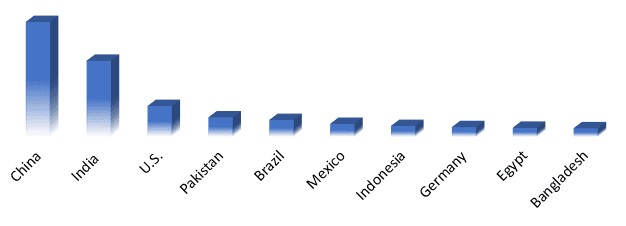
Ingredion Incorporated, Cargill, Tate & Lyle Plc, Archer Daniels Midland Company, Sunwin Stevia International Inc., S&W Seed Company, Stevia Corp, PureCircle Limited, Evolva Holdings SA, GLG Life Tech Corp are some of the prominent players operating in the stevia market. Several M&As along with partnerships have been undertaken by these players to facilitate customers with new varieties of stevias.
Insights Presented in the Report
“Amongst Type, Powder segment holds the major share”
Based on type, the market is segmented into whole leaf, powder, liquid, and others. The powdered segment dominated the stevia market and is expected to grow at a considerable CAGR during the upcoming years as it is one of the most popular and widely available types of stevia in the market all over the world. Furthermore, the highly purified form of stevia powder and enhanced sweetness potency is gaining more traction among the consumers as it can be widely utilized for various applications such as in making beverages, baked foodstuff, desserts, sauces, and many more.
“Amongst Application, Beverages segment holds the major share”
Based on the application, the market is fragmented into food, beverage, dairy & frozen desserts, bakery & confectionery, and tabletop sweeteners. The beverage segment accounted for the highest revenue share in 2020 and is expected to grow with a substantial CAGR during the projected timeframe as there is a growing utilization of stevia while formulating different types of beverages. Also, the increased focus of many industry players to incorporate stevia as an ingredient has led to a rise in the number of beverage launches with stevia. For example, in 2018, Coca-Cola has launched a new Coke product that is sweetened entirely from stevia (Stevia rebaudiana).
“Asia-Pacific represents one of the largest markets of stevia market”
For a better understanding of the market dynamics of the stevia market, a detailed analysis was conducted for different regions across the globe including North America (the U.S, Canada, and the Rest of North America), Europe (Germany, France, Spain, United Kingdom, Italy, and Rest of Europe), Asia-Pacific (China, Japan, India, Australia, and Rest of APAC), Rest of World has been conducted. Asia-Pacific constitutes a major market for the stevia market industry and generated revenue of USD XX Million in 2020 owing to the growing consumption and production of stevias in Asian countries.
Reasons to buy this report:
- The study includes market sizing and forecasting analysis validated by authenticated key industry experts
- The report presents a quick review of overall industry performance at one glance
- The report covers an in-depth analysis of prominent industry peers with a primary focus on key business financials, product portfolio, expansion strategies, and recent developments
- Detailed examination of drivers, restraints, key trends, and opportunities prevailing in the industry
- The study comprehensively covers the market across different segments
- Deep dive regional level analysis of the industry
Customization Options:
The global stevia market can further be customized as per the requirement or any other market segment. Besides this, UMI understands that you may have your own business needs, hence feel free to connect with us to get a report that completely suits your requirements.
Table of Content
Analyzing the historical market, estimation of the current market, and forecasting the future market of the global stevia market were the three major steps undertaken to create and analyze the adoption of stevia in major regions globally. Exhaustive secondary research was conducted to collect the historical market numbers and estimate the current market size. Secondly, to validate these insights, numerous findings and assumptions were taken into consideration. Moreover, exhaustive primary interviews were also conducted, with industry experts across the value chain of the global stevia market. Post assumption and validation of market numbers through primary interviews, we employed a top-down/bottom-up approach to forecasting the complete market size. Thereafter, market breakdown and data triangulation methods were adopted to estimate and analyze the market size of segments and sub-segments the industry pertains to. Detailed methodology is explained below:
Analysis of Historical Market Size
Step 1: In-Depth Study of Secondary Sources:
Detail secondary study was conducted to obtain the historical market size of the Stevia through company internal sources such as annual report & financial statements, performance presentations, press releases, etc., and external sources including journals, news & articles, government publications, competitor publications, sector reports, third-party database, and other credible publications.
Step 2: Market Segmentation:
After obtaining the historical market size of the stevia market, we conducted a detailed secondary analysis to gather historical market insights and share for different segments & sub-segments for major regions. Major segments included in the report as type and application. Further country-level analyses were conducted to evaluate the overall adoption of stevia across the globe.
Step 3: Factor Analysis:
After acquiring the historical market size of different segments and sub-segments, we conducted a detailed factor analysis to estimate the current market size of the stevia. Further, we conducted factor analysis using dependent and independent variables such as growing adoption of stevia in various sectors. A thorough analysis was conducted for demand and supply-side scenarios considering top partnerships, merger and acquisition, business expansion, and product launches in the stevia sector across the globe.
Current Market Size Estimate & Forecast
Current Market Sizing: Based on actionable insights from the above 3 steps, we arrived at the current market size, key players in the stevia market, and market shares of the segments. All the required percentage shares split, and market breakdowns were determined using the above-mentioned secondary approach and were verified through primary interviews.
Estimation & Forecasting: For market estimation and forecast, weights were assigned to different factors including drivers & trends, restraints, and opportunities available for the stakeholders. After analyzing these factors, relevant forecasting techniques i.e., top-down/bottom-up approach was applied to arrive at the market forecast about 2027 for different segments and subsegments across the major markets globally. The research methodology adopted to estimate the market size encompasses:
- The industry’s market size, in terms of value (US$) and the adoption rate of stevia across the major markets domestically
- All percentage shares, splits, and breakdowns of market segments and sub-segments
- Key players in the stevia market in terms of products offered. Also, the growth strategies adopted by these players to compete in the fast-growing market
Market Size and Share Validation
Primary Research: In-depth interviews were conducted with the Key Opinion Leaders (KOLs) including Top Level Executives (CXO/VPs, Sales Head, Marketing Head, Operational Head, and Regional Head, Country Head, etc.) across major regions. Primary research findings were then summarized, and statistical analysis was performed to prove the stated hypothesis. Inputs from primary research were consolidated with secondary findings, hence turning information into actionable insights.
Split of Primary Participants in Different Regions
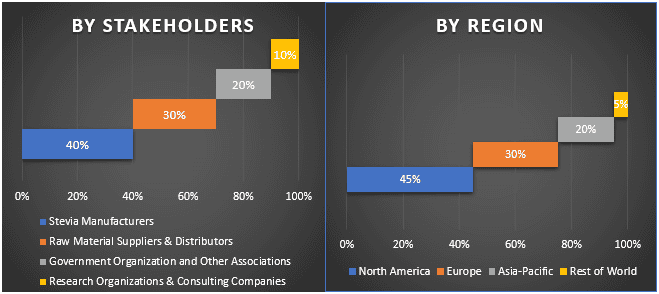
Market Engineering
Data triangulation technique was employed to complete the overall market estimation and to arrive at precise statistical numbers of each segment and sub-segment of the stevia market. Data was split into several segments & sub-segments post studying various parameters and trends in the areas of type and application of the stevia market.
The main objective of the Stevia Market Study
The current & future market trends of stevia were pinpointed in the study. Investors can gain strategic insights to base their discretion for investments from the qualitative and quantitative analysis performed in the study. Current and future market trends were determined the overall attractiveness of the market at a regional level, providing a platform for the industrial participant to exploit the untapped market to benefit as a first-mover advantage. Other quantitative goals of the studies include:
- Analyze the current and forecast market size of stevia in terms of value (US$). Also, analyze the current and forecast market size of different segments and sub-segments
- Segments in the study include areas of type and application.
- Define and analysis of the regulatory framework for the stevia industry
- Analyze the value chain involved with the presence of various intermediaries, along with analyzing customer and competitor behaviors of the industry
- Analyze the current and forecast market size of the stevia market for the major region
- Major regions studied in the report include North America, Europe, Asia-Pacific and Rest of the world
- Company profiles of the stevia market and the growth strategies adopted by the market players to sustain in the fast-growing market
Deep dive regional level analysis of the industry
Related Reports
Customers who bought this item also bought

